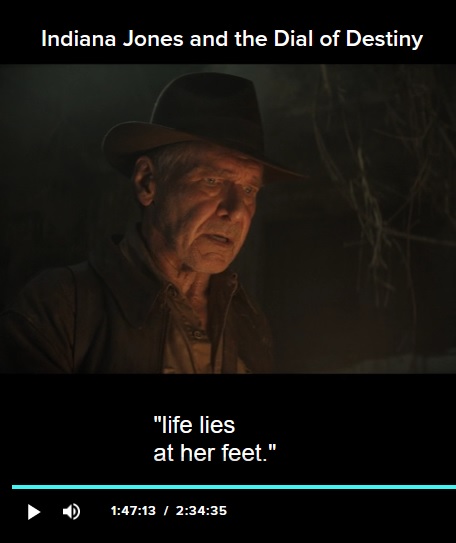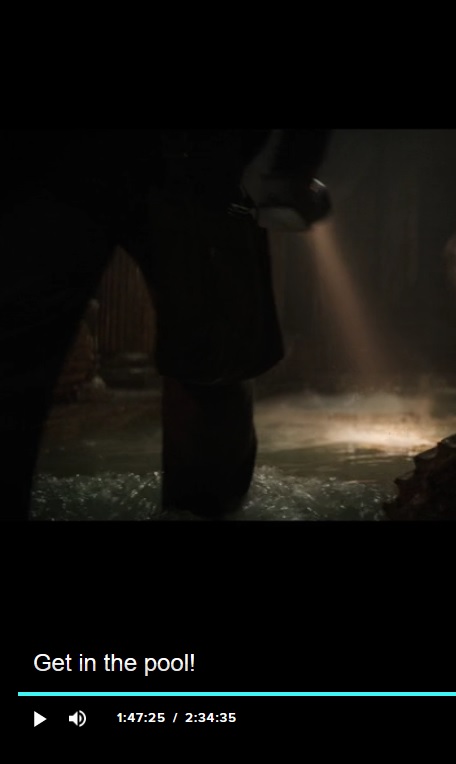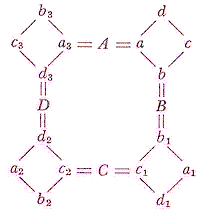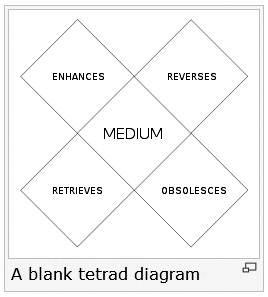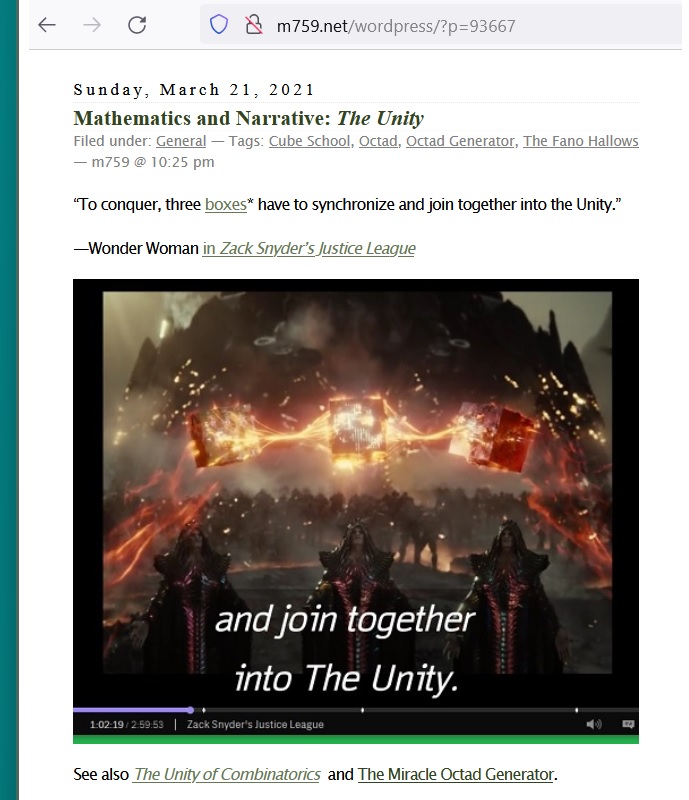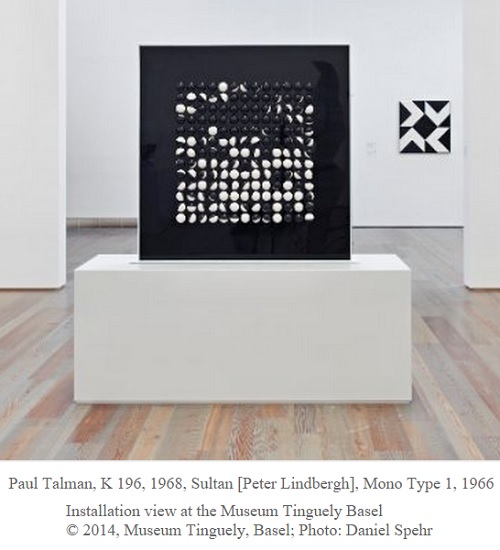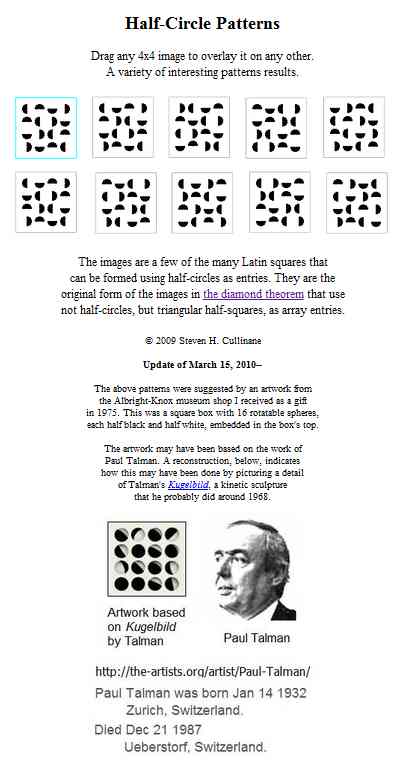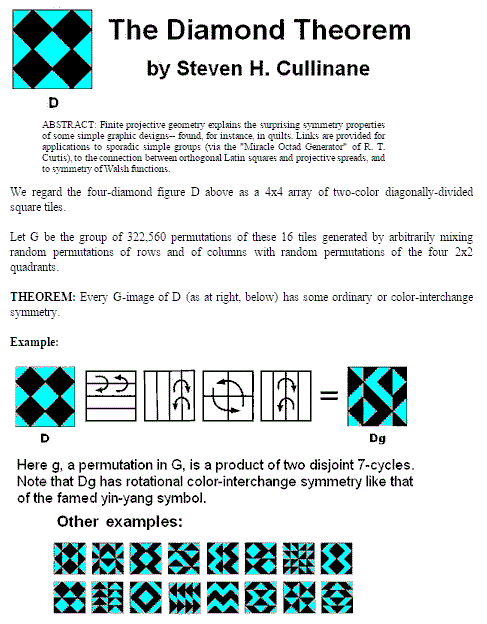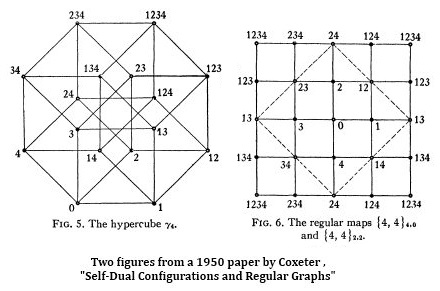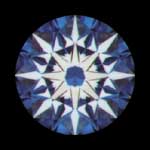Return of the well-dressed man with a beard —
Wednesday, September 27, 2023
Friday, September 15, 2023
Poolman! (Toronto International Film Festival Review)
Monday, July 10, 2023
Plan 9* from Toronto: Egalitarian Elegies
From the August 2023 Notices of the American Mathematical Society —
"He worked tirelessly towards a more egalitarian world…."
"Chandler’s egalitarian spirit infused the workshops."
— Memorial Tribute: Remembrances of Chandler Davis
* See yesterday's Log24 post "Egalitarian Plan 9."
Wednesday, January 8, 2020
Toronto Word Problem
The phrase "funk to a reality" in the previous post suggests …
For the Toronto Star —
DECODING MATHEMATICS AS A SECOND LANGUAGE
"Dissecting a passage of text in a language other than one's
native language is a daunting task and requires a strategy.
When dissecting mathematical language, readers are faced
with the same challenges, whether the mathematics is in
the form of an equation or in the form of a word problem."
— https://www.jstor.org/stable/20876351
The problem, in this case, is with the word "functoriality."
The solution: See the following article.
Tuesday, May 21, 2019
The Toronto Plot*
* A title for Harlan Kane, suggested by obituaries
from The New York Times (this afternoon) and from
CBC News (on May 14, below) . . .
. . . as well as by illustrations shown here on May 13 and by
a screenwriter quoted here on May 12 —
“When I die,” he liked to say, “I’m going to have written
on my tombstone, ‘Finally, a plot!’”
— Robert D. McFadden in The New York Times
Another quote that seems relevant —
“I need a photo opportunity, I want a shot at redemption.
Don’t want to end up a cartoon in a cartoon graveyard.”
— Paul Simon
Saturday, December 31, 2016
Toronto Star Quality
Tuesday, March 22, 2016
The Toronto Problem
A search in this journal for "Toronto Star" yields A Problem.
Friday, September 16, 2011
Art, Jung, Toronto
Related art—
Midnight's Icons,
and…
(Wikipedia figure)
"Visually, a tetrad can be depicted as
four diamonds forming an X…."
Thursday, July 8, 2010
Toronto vs. Rome
or: Catullus vs. Ovid
(Today's previous post, "Coxeter vs. Fano,"
might also have been titled "Toronto vs. Rome.")
ut te postremo donarem munere mortis
Explicatio
Image by Christopher Thomas at Wikipedia —
Unfolding of a hypercube and of a cube —


The metaphor for metamorphosis no keys unlock.
— Steven H. Cullinane, "Endgame"
The current New Yorker has a translation of
the above line of Catullus by poet Anne Carson.
According to poets.org, Carson "attended St. Michael's College
at the University of Toronto and, despite leaving twice,
received her B.A. in 1974, her M.A. in 1975 and her Ph.D. in 1981."
Carson's translation is given in a review of her new book Nox.
The title, "The Unfolding," of the current review echoes an earlier
New Yorker piece on another poet, Madeleine L'Engle—
Cynthia Zarin in The New Yorker, issue dated April 12, 2004–
“Time, for L’Engle, is accordion-pleated. She elaborated,
‘When you bring a sheet off the line, you can’t handle it
until it’s folded, and in a sense, I think, the universe can’t
exist until it’s folded– or it’s a story without a book.’”
(See also the "harrow up" + Hamlet link in yesterday's 6:29 AM post.)
Sunday, November 1, 2009
Indignation and Laughter in Toronto
St. Robertson Davies of Toronto on All Hallows' Eve, 1990— "Nevertheless, our forbears are deserving of tribute for one indisputable reason, if for no other: without them we should not be here. Let us recognize that we are not the ultimate triumph but rather we are beads on a string. Let us behave with decency to the beads that were strung before us, and hope modestly that the beads that come after us will not hold us of no account merely because we are dead. Today and tomorrow are the proper days for such reflection. It need not detain us for more than a few minutes, but it should be sincere. A few gentle thoughts or even — I hardly know how to put it without moving you to indignation or laughter — a brief prayer would not come amiss, and might turn your thoughts in a fruitful direction." Having had a few thoughts for the forbears, let us turn in the direction of Goldilocks.
Wednesday, March 27, 2024
Sunday, October 8, 2023
Sunday in the Park with The New York Times
nytimes.com/2023/10/08/arts/design/claude-cormier-dead.html
"Mr. Cormier, an avant-garde Canadian landscape architect
who created playfully subversive and much loved public spaces,
died on Sept. 15 at his home in Montreal. He was 63."
Somewhat less playful and subversive — This journal on Sept. 15 —
Poolman! (Toronto International Film Festival Review)
Monday, January 9, 2023
Theology and Narrative
The tortoise of the previous post suggests . . .
"Is it the good turtle soup
or merely the mock?"
Related material from the above
Toronto premiere date —
Friday, July 15, 2022
The Cubes continues.
From a Toronto Star video on the Langlands program —
From a review of the 2017 film "Justice League" —
"Now all they need is to resurrect Superman (Henry Cavill),
stop Steppenwolf from reuniting his three Mother Cubes
(sure, whatever) and wrap things up in under two cinematic
hours (God bless)."
See also the 2018 film "Avengers of Justice: Farce Wars."
Sunday, June 6, 2021
Large-Screen Pioneer
From today's New York Times obituary of a pioneering filmmaker —
"In 1948, he enrolled at the University of Toronto
to study political science and economics.
The avant-garde filmmaker Maya Deren taught
a workshop at the university one semester and
he became her lighting assistant. She encouraged
him to abandon economics and make movies instead."
Deren previously appeared here on Sunday, March 31, 2019:
For some wide-screen non-illusion, see . . .
Related material —


Wednesday, January 8, 2020
Sunday, September 15, 2019
For Weisheit, the Rabbi

See also Log24 remarks from the date of Greene's death
in posts now tagged Bregnans.
A page related to Eleanor Cook's "wonderful first line"
quoted above from A Reader's Guide to Wallace Stevens :
A Reader's Guide to Eleanor Cook —
Monday, April 2, 2018
Three Mother Cubes
From a Toronto Star video pictured here on April 1 three years ago:
The three connected cubes are labeled "Harmonic Analysis," 'Number Theory,"
and "Geometry."
Related cultural commentary from a review of the recent film "Justice League" —
"Now all they need is to resurrect Superman (Henry Cavill),
stop Steppenwolf from reuniting his three Mother Cubes
(sure, whatever) and wrap things up in under two cinematic
hours (God bless)."
The nineteenth-century German mathematician Felix Christian Klein
as Steppenwolf —

Volume I of a treatise by Klein is subtitled
"Arithmetic, Algebra, Analysis." This covers
two of the above three Toronto Star cubes.
Klein's Volume II is subtitled "Geometry."
An excerpt from that volume —

Further cultural commentary: "Glitch" in this journal.
Saturday, March 24, 2018
Sure, Whatever.
The search for Langlands in the previous post
yields the following Toronto Star illustration —
From a review of the recent film "Justice League" —
"Now all they need is to resurrect Superman (Henry Cavill),
stop Steppenwolf from reuniting his three Mother Cubes
(sure, whatever) and wrap things up in under two cinematic
hours (God bless)."
For other cubic adventures, see yesterday's post on A Piece of Justice
and the block patterns in posts tagged Design Cube.
Friday, December 8, 2017
Mythos and Logos
Part I: Black Magician
"Schools of criticism create their own canons, elevating certain texts,
discarding others. Yet some works – Malcolm Lowry’s Under the Volcano
is one of them – lend themselves readily to all critical approaches."
— Joan Givner, review of
A Darkness That Murmured: Essays on Malcolm Lowry and the Twentieth Century
by Frederick Asals and Paul Tiessen, eds.

The Asals-Tiessen book (U. of Toronto Press, 2000) was cited today
by Margaret Soltan (in the link below) as the source of this quotation —
"When one thinks of the general sort of snacky
under-earnest writers whose works like wind-chimes
rattle in our heads now, it is easier to forgive Lowry
his pretentious seriousness, his old-fashioned ambitions,
his Proustian plans, [his efforts] to replace the reader’s
consciousness wholly with a black magician’s."
A possible source, Perle Epstein, for the view of Lowry as black magician —
Part II: Mythos and Logos
Part I above suggests a review of Adam Gopnik as black magician
(a figure from Mythos ) —
|
Tuesday, November 7, 2017
Polarities and Correlation
|
— and of an opposing figure from Logos ,
Paul B. Yale, in the references below:
Sunday, November 19, 2017
Other Entertainment
Suggested by the previous post …
" 'Dark Horse' is a song recorded by American singer
Katy Perry featuring rapper Juicy J. It was originally
released on September 17, 2013, by Capitol Records
as the first promotional single from Perry's fourth
studio album, Prism (2013)."
See also a link from the above date in this journal —
"In the Neighborhood of Mathematical Space,"
by Karen Shenfeld (1993).
Thursday, August 24, 2017
Maori Chess, Vol. 2
This just in …
"Genesis Potini died of a heart attack aged 46
on the 15th August 2011."
The 15th of August in New Zealand overlapped
the 14th of August in the U.S.A.
From a Log24 post, "Sunday Review," on August 14, 2011 —
Part II (from "Marshall, Meet Bagger," July 29):
"Time for you to see the field."

For further details, see the 1985 note
"Generating the Octad Generator."
McLuhan was a Toronto Catholic philosopher.
For related views of a Montreal Catholic philosopher,
see the Saturday evening post.
Wednesday, November 30, 2016
In Nuce
|
Excerpts from James C. Nohrnberg, "The Master of the Myth of Literature: An Interpenetrative Ogdoad for Northrop Frye," Comparative Literature Vol. 53, No. 1 (Winter, 2001), pp. 58-82
From page 58 — * P. 22 of Rereading Frye: The Published and Unpublished Works , ed. David Boyd and Imre Salusinszky, Frye Studies [series] (Toronto: University of Toronto Press, 1998). [Abbreviated as RF .]
From page 62 —
From page 63 —
From page 69 —
From page 71 —
From page 77 — |
Thursday, June 2, 2016
Bullshit Studies
"The allusion to 'the most precious square of sense' shows
Shakespeare doing an almost scholastic demonstration of
the need for a ratio and interplay among the senses as
the very constitution of rationality."
— Marshall McLuhan, The Gutenberg Galaxy ,
University of Toronto Press, 1962, page 13
"What Shakespeare refers to in Lear as the 'precious
square of sense' probably has reference to the traditional
'square of opposition' in logic and to that four-part analogy
of proportionality which is the interplay of sense and reason."
— McLuhan, ibid. , page 241
This is of course nonsense, and, in view of McLuhan's pose
as a defender of the Catholic faith, damned nonsense.
Epigraph by McLuhan —
"The Gutenberg Galaxy develops a mosaic or field
approach to its problems."
I prefer a different "mosaic or field" related to the movable
blocks of Fröbel, not the movable type of Gutenberg.
Tuesday, April 26, 2016
Interacting
"… I would drop the keystone into my arch …."
— Charles Sanders Peirce, "On Phenomenology"

" 'But which is the stone that supports the bridge?' Kublai Khan asks."
— Italo Calvino, Invisible Cities, as quoted by B. Elan Dresher.
(B. Elan Dresher. Nordlyd 41.2 (2014): 165-181,
special issue on Features edited by Martin Krämer,
Sandra Ronai and Peter Svenonius. University of Tromsø –
The Arctic University of Norway.
http://septentrio.uit.no/index.php/nordlyd)
Peter Svenonius and Martin Krämer, introduction to the
Nordlyd double issue on Features —
"Interacting with these questions about the 'geometric'
relations among features is the algebraic structure
of the features."
For another such interaction, see the previous post.
This post may be viewed as a commentary on a remark in Wikipedia —
"All of these ideas speak to the crux of Plato's Problem…."
See also The Diamond Theorem at Tromsø and Mere Geometry.
Monday, April 11, 2016
Combinatorial Spider
“Chaos is order yet undeciphered.”
— The novel The Double , by José Saramago,
on which the film "Enemy" was based
Some background for the 2012 Douglas Glover
"Attack of the Copula Spiders" book
mentioned in Sunday's Synchronicity Check —
-
"A vision of Toronto as Hell" — Douglas Glover in the
March 25, 2011, post Combinatorial Delight - For Louise Bourgeois — a post from the date of Galois's death—

Saturday, April 2, 2016
The Emergence of Harlan Kane
Publisher's description of a book about everything —
"When the whole is greater than the sum of the parts—
indeed, so great that the sum far transcends the parts
and represents something utterly new and different—
we call that phenomenon emergence."
— Oxford University Press
Titles for Harlan Kane, from the date that
the above book's author reportedly died —
Friday, March 25, 2016
Pleasantly Discursive
Toronto geometer H.S.M. Coxeter, introducing a book by Unitarian minister
Richard J. Trudeau —
"There is a pleasantly discursive treatment of Pontius Pilate’s
unanswered question ‘What is truth?’”
— Coxeter, 1987, introduction to Trudeau’s
The Non-Euclidean Revolution
Another such treatment …
"Of course, it will surprise no one to find low standards
of intellectual honesty on the Tonight Show.
But we find a less trivial example if we enter the
hallowed halls of Harvard University. . . ."
— Neal Koblitz, "Mathematics as Propaganda"
Less pleasantly and less discursively —
"Funny how annoying a little prick can be."
— The late Garry Shandling
Friday, August 14, 2015
Space Station 2015
(A sequel to Space Station 1976)
For Kathleen Gibbons* —
* Note Gibbons's work on "Discrete phase space based on finite fields."
Friday, June 26, 2015
Expanding the Spielfeld*
For TD Arena …
See also Lincoln Alexander and posts in
this journal just before and on the date of
Alexander's death — Oct. 19, 2012.
* For the title, see Spielfeld posts.
Tuesday, June 9, 2015
Princeton Flashback
From The Daily Princetonian on May 29, 2015:
"… well, isn’t that what Reunions is all about?
Making memories?"
"Try to remember the kind of September …."
From this journal on May 29, 2015:
Openings
|
The Dark Horse Rises
Friday, May 29, 2015
Openings
The film "Pawn Sacrifice" reportedly opened in Toronto on September 11, 2014.
See as well Log24 posts of that day and Autistic Enchantment.
Tuesday, May 19, 2015
The Lindbergh Manifesto

"Creation is the birth of something, and
something cannot come from nothing."
— Photographer Peter Lindbergh at his website
From a biography of Lindbergh —
"… it took Lindbergh awhile to find his true métier.
Born in Krefeld, Germany, in 1944….
Barely out of his teens, he became a painter who
embraced conceptual art and — for reasons he
has since forgotten — adopted the professional
name « Sultan. » Lindbergh… was a few years
short of his 30th birthday when he turned to
photography…."
— "The Man Who Loves Women," by Pamela Young,
Toronto Globe & Mail , September 19, 1996
A Lindbergh work (at right below) from his conceptual-art days —
For a connection between the above work by Paul Talman and the
above "Mono Type 1" of Lindbergh, see…
Wednesday, April 1, 2015
Sunday, March 29, 2015
Sunday, February 1, 2015
Spielerei
Halftime Show —
The "Pyramid Dance" from this journal
on Dec. 3, 2014, the date of death for
mathematics author James Stewart —
Backstory:
|
When Stewart died on Dec. 3, it ended a two-year ordeal that began when doctors discovered multiple myeloma, cancer of the bone marrow, while he was being treated for a broken hip. As the end neared, the meticulously well organized Stewart came to conclude that he would prefer his wake take place before he died. So he set out to organize an extraordinary salon for the people he loved, in the building he loved, featuring music he loved. There was a giant buffet and among the performers was Canadian soprano Measha Brueggergosman using a concert hall that was part of his sprawling 18,000 square foot architectural masterpiece he called Integral House in Toronto's Rosedale. "It was pretty epic. Everyone lined up to talk to him. They'd come up to him and lean down in front of him as he sat," said Joe Clement, a documentary filmmaker who had been filming Stewart for the past three years. The film Integral Man is scheduled for release in early 2016. "I said to myself, 'This is it and this is everything.' It was very powerful." — Mark McNeil in The Hamilton Spectator today |
Friday, September 12, 2014
Sunnyvale News
See a TIME story from yesterday:
See also a post from the above date:
Friday, May 23, 2014
She Meets Her
Filed under: Uncategorized — m759 @ 2:01 PM
She :
The White Goddess in this journal.
Her :
“Eventually we see snow particles….”
— Screenplay by Spike Jonze
Friday, May 23, 2014
Free-Floating Signs
“You’ve got to pick up every stitch…”
— Donovan, song on closing credits of To Die For
“…’Supersymmetry’ was originally written
specifically for Her ….” — Pitchfork
“Eventually we see snow particles….”
— Her screenplay by Spike Jonze
This journal on January 24, 2006:
Context: See Free-Floating Signs.
Backstory: Digital Member and Uneven Break.
She Meets Her
She:
The White Goddess in this journal.
Her:
“Eventually we see snow particles….”
— Screenplay by Spike Jonze
Thursday, May 22, 2014
Visual Structure
“Chaos is order yet undeciphered.”
— The novel The Double , by José Saramago,
on which the recent film "Enemy" was based
For Louise Bourgeois — a post from the date of Galois's death—
For Toronto — Scene from a film that premiered there on Sept. 8, 2013:
Related material: This journal on that date, Sept. 8, 2013:
"I still haven't found what I'm looking for." — Bono
"In fact Surrealism found what it had been looking for
from the first in the 1920 collages [by Max Ernst],
which introduced an entirely original scheme of
visual structure…."
— Rosalind Krauss quoting André Breton*
in "The Master's Bedroom"
* "Artistic Genesis and Perspective of Surrealism"
(1941), in Surrealism and Painting (New York,
Harper & Row, 1972, p. 64).
See also Damnation Morning in this journal.
Saturday, December 14, 2013
Thursday, December 5, 2013
Wednesday, December 4, 2013
Bear and Bull
Excerpt from a poem by Johanna Skibsrud
(Toronto Quarterly , April 2, 2011)—
|
No, I could not love a human being if they
Even if I was a bear
Even if you were a bear
But I am not a bear. And will not eat you. And you are not a bear. And will not eat me. And that is why I could not love you. |
Related material: Into the Bereshit.
See also the remarks on space in Skibsrud's
January 2012 doctoral thesis at the University
of Montreal—
" 'The nothing that is': An Ethics of Absence
Within the Poetry of Wallace Stevens."
— as well as Bull Run I and Bull Run II.
Wednesday, October 30, 2013
Waiting for Ogdoad
The title is from p. xxxix of Michael Dolzani's
introduction to
The "Third Book" Notebooks of Northrop Frye,
1964-1972: The Critical Comedy
(University of Toronto Press, 2002).
Those whose interests are more mathematical
than literary may consult the similar word "octad"
in this journal.
Tuesday, October 8, 2013
Question
|
"Lawrence seems simultaneously naïve and jaded in the face of elemental questions, and he is himself our greatest poet of the interrogative mode: his questions often begin by seeming inconsequential, even coy ('Would you like to throw a stone at me?'), but they unearth unexpected profundities of observation and thought. This process of discovery, not the profundities as such, is what makes the poems so gripping, and it takes place both within the poems and between them."
— James Longenbach on D. H. Lawrence, |
"What then?" — D. H. Lawrence on the novel
"What then?" — Yeats on Plato's ghost
Tuesday, September 17, 2013
Occupy Space
Google News this morning —
For some remarks in greater depth, see
"In the Neighborhood of Mathematical Space,"
by Karen Shenfeld (1993).
Thursday, August 23, 2012
Chapman’s Homer
Louis Sahagun in today's Los Angeles Times—
The late Professor Marvin W. Meyer
"was our Indiana Jones," said James L. Doti,
president of Chapman University in Orange,
where Meyer held the Griset Chair in Bible
and Christian Studies and was director of
the Albert Schweitzer Institute.
Meyer reportedly died on August 16.
Thursday, August 16, 2012
|
Thursday, August 16, 2012
Raiders of the Lost Tesseract
(Continued from August 13. See also Coxeter Graveyard.)
Here the tombstone says
"GEOMETRY… 600 BC — 1900 AD… R.I.P."
In the geometry of Plato illustrated below,
"the figure of eight [square] feet" is not , at this point
in the dialogue, the diamond in Jowett's picture.
An 1892 figure by Jowett illustrating Plato's Meno—
Jowett's picture is nonetheless of interest for
its resemblance to a figure drawn some decades later
by the Toronto geometer H. S. M. Coxeter.
A similar 1950 figure by Coxeter illustrating a tesseract—
For a less scholarly, but equally confusing, view of the number 8,
see The Eight , a novel by Katherine Neville.
Semiotics
"Two clichés make us laugh, but
a hundred clichés move us
because we sense dimly that the clichés
are talking among themselves and
celebrating a reunion."
"'Casablanca': Cult Movies and Intertextual Collage,"
by Umberto Eco in SubStance , Vol. 14, No. 2, Issue 47:
In Search of Eco's Roses (1985), pp. 3-12.
(This paper was presented at a symposium,
"Semiotics of the Cinema: The State of the Art,"
in Toronto on June 18, 1984.)
Journal article published by U. of Wisconsin Press.
Stable URL: http://www.jstor.org/stable/3685047.
Click image for some related material.
Thursday, March 8, 2012
Light
For Women's Day—
- Reviews of GCB from Dallas and Toronto
- Sweater, a post of 2:02 PM EST Monday
(1:02 PM Monday, Dallas time) - Schedule for a Monday afternoon event in Dallas
- NY Times front page Monday evening, featuring
remarks by "The Stone" philosopher Colin McGinn - A 10 PM Monday link to a Harvard Crimson review
of a book by McGinn
Sunday, December 25, 2011
Xmas Ornaments
Yesterday's "diamond globe" post linked to a picture by Prof. Mike Zabrocki
of York University in Toronto. Here is the picture itself—

Some related material from 2004—
Prof Talk: Thursday, April 1st, from 2:30pm to 3:30pm in North Ross 638.
Speaker: Prof. Mike Zabrocki
Title: "Gems of Algebra: The Secret Life of the Symmetric Group"
Prof. Zabrocki's talk was enjoyable and accessible. One of the notable aspects of the talk was that Prof. Zabrocki presented some open problems related to the topics he was speaking about. Unfortunately, there were some technical problems that resulted in some images not appearing in Prof. Zabrocki's PowerPoint presentation, but Prof. Zabrocki easily made up for the problem by some work at the chalk board. Please feel free to take a look at Prof. Zabrocki's PowerPoint presentation, as well as the pictures of the permutahedron for n=4 and the permutahedron for n=5.
Some slides from the talk—



Detail from the slides—

A less academic ornament, from this journal on the date
of the Zabrocki talk—
Click image for context.
Thursday, October 13, 2011
Now, Here’s My Plan
"Plan 9 is an operating system kernel but also a collection of accompanying software."
— Webpage pointed out by the late Dennis Ritchie,
father of the programming language C
and co-developer of Unix, who reportedly died on October 8.
From Ritchie's own home page—
"A brief biography, in first person instead of obituary style."
From that biography—
"Today, as a manager of a small group of researchers, I promote exploration of distributed operating systems, languages, and routing/switching hardware. The recent accomplishments of this group include the Plan 9 operating system…."
Another operating system is that of Alfred Bester.
My laptop now includes his classic The Stars My Destination ,
downloaded this morning…
Not much compared to Widener Library (see this morning's Lost Cornerstone),
but sufficient for present purposes…
"Simple jaunt." — "The Comedian as the Letter C"
See also Plan 9 from Outer Space in this journal.
Tuesday, October 4, 2011
House of the Muse
Everett Ellin, pioneer of art museum technology, died on September 16th.
"Few bastions of the humanities have withstood the march of technology more tenaciously than the art museum,” Mr. Ellin wrote in a journal article in 1969. "But now, at long last, the computer has entered the house of the Muse and— like the man who came to dinner— the guest is here to stay. It would behoove the host to know something about his visitor’s care and feeding."
— Margalit Fox in tonight's online New York Times
From this journal on the date of Ellin's death—
Click image for some context.
Sunday, September 18, 2011
Anatomy of a Cube
R.D. Carmichael’s seminal 1931 paper on tactical configurations suggests
a search for later material relating such configurations to block designs.
Such a search yields the following—
“… it seems that the relationship between
BIB [balanced incomplete block ] designs
and tactical configurations, and in particular,
the Steiner system, has been overlooked.”
— D. A. Sprott, U. of Toronto, 1955
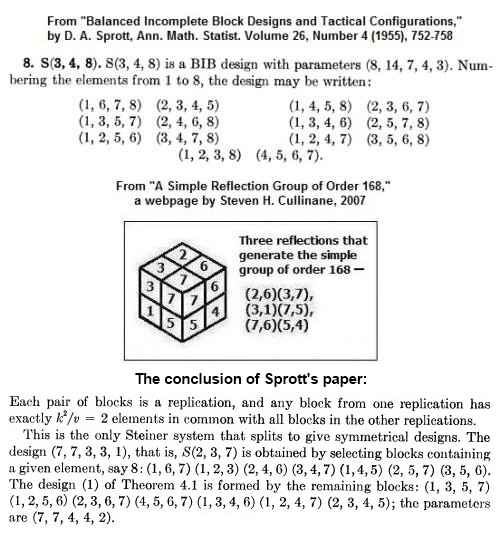
The figure by Cullinane included above shows a way to visualize Sprott’s remarks.
For the group actions described by Cullinane, see “The Eightfold Cube” and
“A Simple Reflection Group of Order 168.”
Update of 7:42 PM Sept. 18, 2011—
From a Summer 2011 course on discrete structures at a Berlin website—
A different illustration of the eightfold cube as the Steiner system S(3, 4, 8)—

Note that only the static structure is described by Felsner, not the
168 group actions discussed (as above) by Cullinane. For remarks on
such group actions in the literature, see “Cube Space, 1984-2003.”
Sunday, August 14, 2011
Sunday Review
The Sunday New York Times today—
This suggests…
The Elusive Small Idea—
Part I:
McLuhan and the Seven Snow Whites

Part II (from "Marshall, Meet Bagger," July 29):
"Time for you to see the field."

For further details, see the 1985 note
"Generating the Octad Generator."
McLuhan was a Toronto Catholic philosopher.
For related views of a Montreal Catholic philosopher,
see the Saturday evening post.
Friday, March 25, 2011
Combinatorial Delight
See Margaret Atwood in this journal.
This link was suggested by the phrase "combinatorial* delight" in last night's quote from Nabokov, which also appears in Douglas Glover's review essay, "Her Life Entire," in Books in Canada , Volume 17, Number 7, October 1988—
Cat's Eye is Atwood's seventh novel. It is dense, intricate, and superb, as thematically diverse and complex as anything she has written. It is what you might expect from a writer at mid-career, mid-life: a portrait of the artist, a summation of what she knows about art and people. It is also an Atwoodian Under the Volcano , a vision of Toronto as Hell.
See also Under the Volcano and Toronto in this journal.
"Right through hell there is a path." –Under the Volcano
* Update: Corrected on Dec. 13, 2014, to "combinational delight."
Monday, November 1, 2010
Seasons of…
A Year of Magical Thinking
In memory of Theodore Chaikin Sorensen, who died at noon in New York on Halloween —
Two posts from All Saints' Day, 2009 —
October Endgame and Indignation and Laughter in Toronto.
Related material: New York Lottery on All Hallows' Eve this year —
Midday 896, Evening 384.
"Man is a system that transforms itself." (Paul Valéry, Cahiers , Vol. 2, page 896)
"There is such a thing as a tesseract." (Madeleine L'Engle. See 384 on Halloween 2006.)
Tuesday, August 10, 2010
A Problem
From Telegraph.co.uk (published: 5:56 PM BST 10 Aug 2010), a note on British-born Canadian journalist Bruce Garvey, who died at 70 on August 1—
In 1970, while reporting on the Apollo 13 mission at Nasa Mission Control for the Toronto Star, he was one of only two journalists— alongside Richard Killian of the Daily Express— to hear the famous message: "Houston we've had a problem."
See also Log24 posts of 10 AM and noon today.
The latter post poses the problem "You're dead. Now what?"
Again, as in this morning's post, applying Jungian synchronicity—
A check of this journal on the date of Garvey's death yields a link to 4/28's "Eightfold Geometry."
That post deals with a piece of rather esoteric mathematical folklore. Those who prefer easier problems may follow the ongoing struggles of Julie Taymor with "Spider-Man: Turn Off the Dark."
The problems of death, geometry, and Taymor meet in "Spider Woman" (April 29) and "Memorial for Galois" (May 31).
Sunday, April 4, 2010
URBI ET ORBI
URBI
(Toronto)–
Click on image for some background.
ORBI
(Globe and Mail)–
See also Baaad Blake and
Fearful Symmetry.
Wednesday, March 10, 2010
He Ain’t Heavy
Serious Men, or
Alarm Bells for the Goys
(A Sequel to Household Name)
(Also on 11 Sept 2006– Sontag's Sermon)
German Catholic sex abuse scandals draw link to Pope
Wed Mar 10, 2010 9:03pm IST
By Tom Heneghan, Reuters Religion Editor
PARIS (Reuters)–
"… The alarm bells are tolling all the more urgently in Rome, where tenuous links run from Bavarian boarding schools all the way to the German-born Pope Benedict. Critics are asking what he knew and did then and what he will do now.
His brother, Rev. Georg Ratzinger, has admitted to slapping boys in his Regensburg choir repeatedly."
For some background on the brother's admission, see today's Belfast Telegraph.
Related material: "Beware the Jabberwock!" — Joshua

Alice and Joshua in Central Park
"You are retracing your steps."
— Jacques Derrida
Monday, February 22, 2010
Annals of Philosophy
The Medium is the Message
From the Wikipedia article
on Marshall McLuhan–
(Click images for some background.)
Related material:
a web page on McLuhan's
student Walter J. Ong, S. J.,
Monday, July 13, 2009
Monday July 13, 2009
— Wallace Stevens

The above was, like the
previous entry, suggested by
this morning’s monumentally
tasteless NY Times obit page.
The author of the
“pleasantly discursive”
remark has been called both
“King of Geometry” and
“King of Infinite Space.”
He lived in Toronto.
Detail of this morning’s Times
(click for larger version) —

(Corcoran.com is the website of
a New York City real estate firm.
Today’s Bing.com search image is
a view of the city from Central Park.)
“We keep coming back
and coming back/To the real….”
— Wallace Stevens
Friday, February 13, 2009
Friday February 13, 2009
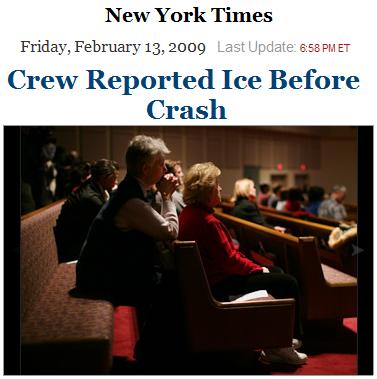
Prologue from
Answers.com:
bombardier
The member of a
combat aircraft crew who
operates the bombsight
and drops the bombs.
|
February 13, 2009 — Toronto Bombardier confirms a Dash 8 Q400 aircraft was involved in an accident near Buffalo, New York on February 12. We extend our sympathies to the families of those who perished in this accident. Bombardier has dispatched a product safety and technical team to the site to assist the National Transportation Safety Board with their investigation. Until such time as the investigators release any information or findings, Bombardier cannot comment further or speculate on the cause of this accident. Bombardier Q400 product information is available on www.q400.com. |
The Associated Press
On this date…
in 1945, during World War II,
Allied planes began bombing
the German city of Dresden.
For the rest of the story,
see Kurt Vonnegut
and Robert Frost.
Wednesday, February 4, 2009
Wednesday February 4, 2009
In memory of
James Joyce and of
Patrick McGoohan.
who both died on
a January 13th —


Related material:
The phrase
"Habitat Global Village"
in the previous entry.
Marshall McLuhan was
apparently the originator
of the phrase
"global village."
The phrase, coined by McLuhan,
a Catholic, should be associated
more with Rome than
with Americus, Georgia.
"The association is the idea."
— Ian Lee, The Third Word War

Saturday, December 20, 2008
Saturday December 20, 2008
Cheap* Epiphanies
for the Church of
the Forbidden Planet
Mid-day lotteries Dec. 19:
* NY 198  PA 918
PA 918
O the mind, mind has mountains,
cliffs of fall
Frightful, sheer, no-man fathomed.
Hold them cheap
May who ne'er hung there.
Evening lotteries Dec. 19:
* NY 198  PA 414
PA 414
"minds blazing, to the barricades"
— The New York Times
on the Wheeler effectSee also
Bloomsday for Nash:
The Revelation Game —
Thursday, September 18, 2008
Thursday September 18, 2008
jour·nal·ist
— The American Heritage Dictionary
of the English Language, Fourth Edition, according to Dictionary.com |

Related material:
— Fr. Morton Kelsey,
The Other Side of Silence
See also Tuesday’s Church of the Forbidden Planet and the journal entry of October 9, 2005, which contains both the thoughts of Joan Didion on Hoover Dam and the following meditation:
|
A quotation that somehow
seems relevant: O the mind, mind has mountains, |
Monday, August 18, 2008
Monday August 18, 2008
| Lotteries on August 17, 2008 |
Pennsylvania (No revelation) |
New York (Revelation) |
| Mid-day (No belief) |
No belief, no revelation 492 Chinese 4 9 2 (See below.) |
Revelation without belief 423 4/23: |
| Evening (Belief) |
Belief without revelation 272 (See below.) |
Belief and revelation 406 4/06: |
An encounter with “492”–
| “What is combinatorial mathematics? Combinatorial mathematics, also referred to as combinatorial analysis or combinatorics, is a mathematical discipline that began in ancient times. According to legend the Chinese Emperor Yu (c. 2200 B.C.) observed the magic square 4 9 2
3 5 7 8 1 6 on the shell of a divine turtle….” — H.J. Ryser, Combinatorial Mathematics, Mathematical Association of America, Carus Mathematical Monographs 14 (1963) |
Theology and human experience,
and the experience of “272”–
| From Christian Tradition Today, by Jeffrey C. K. Goh (Peeters Publishers, 2004), p. 438: “Insisting that theological statements are not simply deduced from human experience, Rahner nevertheless stresses the experience of grace as the ‘real, fundamental reality of Christianity 272 ‘Grace’ is a key category in Rahner’s theology. He has expended a great deal of energy on this topic, earning himself the title, amongst others, of a ‘theologian of the graced search for meaning.’ See G. B. Kelly (ed.), Karl Rahner, in The Making of Modern Theology series (Edinburgh: T&T Clark, 1992).” |
Tuesday, May 6, 2008
Tuesday May 6, 2008
the Point Was Ten
From Play It As It Lays,
the paperback edition of 1990
(Farrar, Straus and Giroux) —
| Page 170: “… In her half sleep the point was ten, the jackpot was on eighteen, the only man that could ever reach her was the son of a preacher man, someone was down sixty, someone was up, Daddy wants a popper and she rode a painted pony let the spinning wheel spin. By the end of a week she was thinking constantly 170
|
For further details
see yesterday’s entries.”In her half sleep
the point was ten….”
— Play It As It Lays
The Random House

signed first edition
of Norman Mailer’s
The Time of Our Time
(4 pounds, 1286 pages)
was published
ten years ago yesterday —
May 5, 1998:
Fireworks starburst
on the cover of
The Time of Our Time

Also from May 5, 1998:
File Photo in Mailer’s obituary —
(Photo by Bebeto Matthews
with Mailer obituary in
Toronto Globe and Mail)
with excerpt from the obituary,
by Richard Pyle
(Associated Press
Saturday, Nov. 10, 2007
at 8:20 AM EDT)

Related material:
Yesterday’s entries and
the time of this entry:
11:07:51 AM ET


51
THE JUDGMENT SHOCK brings success. Shock comes - oh, oh! Laughing words - ha, ha!
in light of…
| A: Mailer’s fireworks starburst on his book cover from ten years ago yesterday B: A real starburst in a story |
Wednesday, April 23, 2008
Wednesday April 23, 2008
Upscale Realism
or, "Have some more
wine and cheese, Barack."
Allyn Jackson on Rebecca Goldstein
in the April 2006 AMS Notices (pdf)
|
"Rebecca Goldstein’s 1983 novel The Mind-Body Problem has been widely admired among mathematicians for its authentic depiction of academic life, as well as for its exploration of how philosophical issues impinge on everyday life. Her new book, Incompleteness: The Proof and Paradox of Kurt Gödel, is a volume in the 'Great Discoveries' series published by W. W. Norton….
In March 2005 the Mathematical Sciences Research Institute (MSRI) in Berkeley held a public event in which its special projects director, Robert Osserman, talked with Goldstein about her work. The conversation, which took place before an audience of about fifty people at the Commonwealth Club in San Francisco, was taped…. A member of the audience posed a question that has been on the minds of many of Goldstein’s readers: Is The Mind-Body Problem based on her own life? She did indeed study philosophy at Princeton, finishing her Ph.D. in 1976 with a thesis titled 'Reduction, Realism, and the Mind.' She said that while there are correlations between her life and the novel, the book is not autobiographical…. She… talked about the relationship between Gödel and his colleague at the Institute for Advanced Study, Albert Einstein. The two were very different: As Goldstein put it, 'Einstein was a real mensch, and Gödel was very neurotic.' Nevertheless, a friendship sprang up between the two. It was based in part, Goldstein speculated, on their both being exiles– exiles from Europe and intellectual exiles. Gödel's work was sometimes taken to mean that even mathematical truth is uncertain, she noted, while Einstein's theories of relativity were seen as implying the sweeping view that 'everything is relative.' These misinterpretations irked both men, said Goldstein. 'Einstein and Gödel were realists and did not like it when their work was put to the opposite purpose.'" |
Related material:
From Log24 on
March 22 (Tuesday of
Passion Week), 2005:
|
"'What is this Stone?' Chloe asked…. 'It is told that, when the Merciful One made the worlds, first of all He created that Stone and gave it to the Divine One whom the Jews call Shekinah, and as she gazed upon it the universes arose and had being.'"
— Many Dimensions,
For more on this theme
appropriate to Passion Week — Jews playing God — see
Rebecca Goldstein
Wine and cheese |
From
UPSCALE,
a website of the
physics department at
the University of Toronto:
|
Mirror Symmetry

"The image [above]
The caption of the
'That most divine and beautiful
The caption of the
'A shadow, likeness, or * Sic. The original is incomprehensibilis, a technical theological term. See Dorothy Sayers on the Athanasian Creed and John 1:5. |
For further iconology of the
above equilateral triangles,
see Star Wars (May 25, 2003),
Mani Padme (March 10, 2008),
Rite of Sping (March 14, 2008),
and
Art History: The Pope of Hope
(In honor of John Paul II
three days after his death
in April 2005).
Happy Shakespeare's Birthday.
Thursday, March 6, 2008
Thursday March 6, 2008
This note is prompted by the March 4 death of Richard D. Anderson, writer on geometry, President (1981-82) of the Mathematical Association of America (MAA), and member of the MAA's Icosahedron Society.
"The historical road
from the Platonic solids
to the finite simple groups
is well known."
— Steven H. Cullinane,
November 2000,
Symmetry from Plato to
the Four-Color Conjecture
"By far the most important structure in design theory is the Steiner system S(5, 8, 24)."
This Steiner system is closely connected to M24 and to the extended binary Golay code. Brouwer gives an elegant construction of that code (and therefore of M24):
"Let N be the adjacency matrix of the icosahedron (points: 12 vertices, adjacent: joined by an edge). Then the rows of the 12×24 matrix
— Op. cit., p. 719
Finite Geometry of
the Square and Cube
and
Jewel in the Crown
"There is a pleasantly discursive
treatment of Pontius Pilate's
unanswered question
'What is truth?'"
— H. S. M. Coxeter, 1987,
introduction to Trudeau's
"story theory" of truth
Those who prefer stories to truth
may consult the Log24 entries
of March 1, 2, 3, 4, and 5.
They may also consult
the poet Rubén Darío:
… Todo lo sé por el lucero puro
que brilla en la diadema de la Muerte.
* For a road out of this wasteland, back to geometry, see The Kaleidoscope Puzzle and Reflection Groups in Finite Geometry.
Friday, August 3, 2007
Friday August 3, 2007
on Matt Damon's new film—
"At least partly, the Bourne movies
are a 21st-century Frankenstein story."
On Prof. Gian-Carlo Rota of MIT,
found dead on April 19, 1999–
"He made it a priority to
start any sort of meeting with
a long drawn-out hello…."

2007:

Wednesday, December 20, 2006
Wednesday December 20, 2006
"For every kind of vampire,
there is a kind of cross."
— Thomas Pynchon

"Also on the card is Adrien Brody ('The Thin Red Line') as a poseur proto-punk who lives in his parents' converted garage and strips at an underground gay club. He takes heat from his former friends– the aforementioned neighborhood toughs– for affecting an English accent and wearing a mohawk…."
— Rob Blackwelder review of Spike Lee's "Summer of Sam" (1999)

"With its white community focus, Summer of Sam is something of a departure for Lee. But with its immaculate script, faultless acting and Lee's own cameo performance, it is a typical Spike Lee film. Plenty of rapid-fire, wise-cracking dialogue and hectic crowd scenes make it fraught with tension from beginning to end. Hectic, inventive, gritty, witty, edgy and provocative, no detail is too small to escape Lee's attention and no issue too large as the film's perceptive dissection of human nature moves effortlessly between humour and horror."

"At another end of the sexual confusion spectrum, there's Vinny's childhood friend, now turned spiky-haired punk rocker, Ritchie (Adrien Brody). Recently he's started dating Ruby (Jennifer Esposito), erstwhile neighborhood tramp. They are both redeemed by their relationship, which at least at first, involves no sex, technically. Where Vinny struggles with his culturally instilled madonna-whore complex, Ritchie's just back from a stint living in the Village, looking for an identity that's distinct from his Italian gotta-be-macho upbringing. Eventually, he gets a gig at CBGB's ('How do you spell that?' wonders Vinny), but in order to make ends meet (and pay for his new guitar), he's dancing and turning tricks at Male World, a decrepit gay club where he performs fellatio with a life-sized dummy on stage, and, you assume, with clients offscreen."
— Cynthia Fuchs revew (title: "Sex and the City")
Susan G. Cole on the
75th Annual Academy Awards,
presented March 23, 2003 —
"I watched Halle Berry wipe her mouth off after Adrien Brody, in the heat of his excitement, laid the lip-lock on her for five full excruciating seconds. She was stunned, and seemed to have no idea what had happened to her. I'll tell you what happened, Halle: it's called sexual assault."

The Kiss…

Where's the Oscar
for the mouth-wipe?
Thursday, September 7, 2006
Thursday September 7, 2006
Elizabeth I of England
“What, nephew,” said the king,
“is the wind in that door?”
SIR THOMAS MALORY
Le Morte d’Arthur
— Epigraph to
A Wind in the Door,
by Madeleine L’Engle
Vaine the ambition of Kings,
Who seeke by trophies and dead things,
To leave a living name behind,
And weave but nets to catch the wind.
— John Webster,
The Devil’s Law Case
From Eliot’s
The Waste Land,
Part II, “A Game of Chess”:
| I think we are in rats’ alley | 115 |
| Where the dead men lost their bones |
116 |
| “What is that noise?” | 117 |
| The wind under the door. | 118 |
| “What is that noise now? What is the wind doing?” |
119 |
| Nothing again nothing. | 120 |
Eliot’s note:
118. Cf. Webster: “Is the wind
in that door still?”
The line cited in Eliot’s note
is from John Webster’s
The Devil’s Law Case,
3.2.162.
Wednesday, November 30, 2005
Wednesday November 30, 2005
Hobgoblin?
Brian Davies is a professor of mathematics at King’s College London. In the December Notices of the American Mathematical Society, he claims that arithmetic may, for all we know, be inconsistent:
Platonistically-inclined mathematicians would deny the possibility that Peano arithmetic could be flawed. From Kronecker onwards many consider that they have a direct insight into the natural numbers, which guarantees their existence. If the natural numbers exist and Peano’s axioms describe properties that they possess then, since the axioms can be instantiated, they must be consistent.”
“It is not possible to prove that Peano arithmetic is consistent”…?!
Where did Gödel say this? Gödel proved, in fact, according to a well-known mathematician at Princeton, that (letting PA stand for Peano Arithmetic),
— Edward Nelson,
Mathematics and Faith (pdf)
Remarkably, even after he has stated correctly Gödel’s result, Nelson, like Davies, concludes that
I prefer the argument that the existence of a model ensures the consistency of a theory.
For instance, the Toronto philosopher William Seager writes that
The relationship between consistency and the existence of a model is brought home by the following weblog entry that neatly summarizes a fallacious argument offered in the AMS Notices by Davies:
Consider the following list A1 of axioms.
(1) There is a natural number 0.
(2) Every natural number a has a successor, denoted by S(a).
(3) There is no natural number whose successor is 0.
(4) Distinct natural numbers have distinct successors: a = b if and only if S(a) = S(b).
(5) If a property is possessed by 0 and also by the successor of every natural number which possesses it, then it is possessed by all the natural numbers.
Now consider the following list A2 of axioms.
(1) G is a set of elements and these elements obey the group axioms.
(2) G is finite but not isomorphic to any known list of finite simple groups.
(3) G is simple, in other words, if N is a subset of G satisfying certain properties then N=G.
We can roughly compare A2 with A1. The second axiom in A2 can be thought of as analogous to the third axiom of A1. Also the third axiom of A2 is analogous to the fifth axiom of A1, insofar as it refers to an unspecified set with cetain properties and concludes that it is equal to G.
Now, as is generally believed by most group theorists, the system A2 is internally inconsistent and the proof its inconsistency runs for more than 10000 pages.
So who is to deny that the system A1 is also probably internally inconsistent! Particularly since Godel proved that you can not prove it is consistent (staying inside the system). May be the shortest proof of its inconsistency is one hundred million pages long!
— Posted by Krishna,
11/29/2005 11:46:00 PM,
at his weblog,
“Quasi-Coherent Ruminations”
An important difference between A1 (the set of axioms of Peano arithmetic) and A2 (a set of axioms that describe a new, unknown, finite simple group) is that A1 is known to have a model (the nonnegative integers) and A2 is not known to have a model.
Therefore, according to Seager’s argument, A1 is consistent and A2 may or may not be consistent.
The degree to which Seager’s argument invokes Platonic realism is debatable. Less debatable is the quasireligious faith in nominalism proclaimed by Davies and Nelson. Nelson’s own account of a religious experience in 1976 at Toronto is instructive.
— Edward Nelson,
Mathematics and Faith (pdf)
Nelson’s “Mathematics and Faith” was written for the Jubilee for Men and Women from the World of Learning held at the Vatican, 23-24 May 2000. It concludes with an invocation of St. Paul:
— Edward Nelson,
Mathematics and Faith (pdf)
Belief in the consistency of arithmetic may or may not be foolish, and therefore an Emersonian hobgoblin of little minds, but bullshit is bullshit, whether in London, in Princeton, in Toronto, or in Rome.
Sunday, October 9, 2005
Sunday October 9, 2005
Magical Thinking
the first generator at Boulder
(later Hoover) Dam began
transmitting electricity to Los Angeles."
— Today in History, Associated Press
generates radiance."
— Hexagram 30
"I know what nothing means."
— Maria Wyeth in Play It As It Lays
"Nothing is random."
— Mark Helprin in Winter's Tale
"… She thought about nothing. Her mind was a blank tape, imprinted daily with snatches of things overheard, fragments of dealers' patter, the beginnings of jokes and odd lines of song lyrics. When she finally lay down nights in the purple room she would play back the day's tape, a girl singing into a microphone and a fat man dropping a glass, cards fanned on a table and a dealer's rake in closeup and a woman in slacks crying and the opaque blue eyes of the guard at some baccarat table. A child in the harsh light of a crosswalk on the Strip. A sign on Fremont Street. A light blinking. In her half sleep the point was ten, the jackpot was on eighteen, the only man that could ever reach her was the son of a preacher man, someone was down sixty, someone was up, Daddy wants a popper and she rode a painted pony let the spinning wheel spin.
By the end of a week she was thinking constantly about where her body stopped and the air began, about the exact point in space and time that was the difference between Maria and other. She had the sense that if she could get that in her mind and hold it for even one micro-second she would have what she had come to get. As if she had fever, her skin burned and crackled with a pinpoint sensitivity. She could feel smoke against her skin. She could feel voice waves. She was beginning to feel color, light intensities, and she imagined that she could be put blindfolded in front of the signs at the Thunderbird and the Flamingo and know which was which. 'Maria,' she felt someone whisper one night, but when she turned there was nobody.
She began to feel the pressure of Hoover Dam, there on the desert, began to feel the pressure and pull of the water. When the pressure got great enough she drove out there. All that day she felt the power surging through her own body. All day she was faint with vertigo, sunk in a world where great power grids converged, throbbing lines plunged finally into the shallow canyon below the dam's face, elevators like coffins dropped into the bowels of the earth itself. With a guide and a handful of children Maria walked through the chambers, stared at the turbines in the vast glittering gallery, at the deep still water with the hidden intakes sucking all the while, even as she watched, clung to the railings, leaned out, stood finally on a platform over the pipe that carried the river beneath the dam. The platform quivered. Her ears roared. She wanted to stay in the dam, lie on the great pipe itself, but reticence saved her from asking.
'Just how long have you been here now,' Freddy Chaikin asked when she ran into him in Caesar's. 'You planning on making a year of it? Or what?'"
Related material
The front page of today's
New York Times Book Review
and Log24, July 15, 2004:
|
A quotation that somehow
seems relevant:
O the mind, mind has mountains, |
Sunday, June 19, 2005
Sunday June 19, 2005
Darkness Visible
Serv’d only to discover sights of woe”
— John Milton, Paradise Lost,
Book I, lines 63-64
summarizes the art of Ad Reinhardt
(Adolph Dietrich Friedrich Reinhardt,
Dec. 24, 1913 – Aug. 30, 1967):
|
Fade to Black “…that ineffable constellation of talents that makes the player of rank: a gift for conceiving abstract schematic possibilities; a sense of mathematical poetry in the light of which the infinite chaos of probability and permutation is crystallized under the pressure of intense concentration into geometric blossoms; the ruthless focus of force on the subtlest weakness of an opponent.” — Trevanian, Shibumi
“‘Haven’t there been splendidly elegant colors in Japan since ancient times?’ ‘Even black has various subtle shades,’ Sosuke nodded.” — Yasunari Kawabata, The Old Capital
An Ad Reinhardt painting
Ad Reinhardt, The viewer may need to tilt “The grid is a staircase to the Universal…. We could think about Ad Reinhardt, who, despite his repeated insistence that ‘Art is art,’ ended up by painting a series of… nine-square grids in which the motif that inescapably emerges is a Greek cross.  Greek Cross There is no painter in the West who can be unaware of the symbolic power of the cruciform shape and the Pandora’s box of spiritual reference that is opened once one uses it.” — Rosalind Krauss,
|
In memory of
St. William Golding
(Sept. 19, 1911 – June 19, 1993)
Monday, May 2, 2005
Monday May 2, 2005
"Professor Krauss even uses many of the same decorations with which she festooned earlier volumes. Bataille’s photograph of a big toe, for example, which I like to think of as her mascot, reappears. As does her favorite doodle, a little graph known as a 'Klein Group' or 'L Schema' whose sides and diagonals sport arrows pointing to corners labeled with various opposing pairs: e.g., 'ground' and 'not ground,' 'figure' and 'not figure.' Professor Krauss seems to believe that this device, lifted from the pages of structuralist theory, illuminates any number of deep mysteries: the nature of modernism, to begin with, but also the essence of gender relations, self-consciousness, perception, vision, castration anxiety, and other pressing conundrums that, as it happens, she has trouble distinguishing from the nature of modernism. Altogether, the doodle is a handy thing to have around. One is not surprised that Professor Krauss reproduces it many times in her new book."
The Semiotics of Human Action,
Ritual, and Dance:

Beckett's "Quad" figure
 A Jungian on this six-line figure: "They are the same six lines |
"People have believed in the fundamental character of binary oppositions since at least classical times. For instance, in his Metaphysics Aristotle advanced as primary oppositions: form/matter, natural/unnatural, active/passive, whole/part, unity/variety, before/after and being/not-being.* But it is not in isolation that the rhetorical power of such oppositions resides, but in their articulation in relation to other oppositions. In Aristotle's Physics the four elements of earth, air, fire and water were said to be opposed in pairs. For more than two thousand years oppositional patterns based on these four elements were widely accepted as the fundamental structure underlying surface reality….
 The structuralist semiotician Algirdas Greimas introduced the semiotic square (which he adapted from the 'logical square' of scholastic philosophy) as a means of analysing paired concepts more fully…."
The structuralist semiotician Algirdas Greimas introduced the semiotic square (which he adapted from the 'logical square' of scholastic philosophy) as a means of analysing paired concepts more fully…."
— Daniel Chandler, Semiotics for Beginners.
* Compare Chandler's list of Aristotle's primary oppositions with Aristotle's list (also in the Metaphysics) of Pythagorean oppositions (see Midrash Jazz Quartet).
Tuesday, November 2, 2004
Tuesday November 2, 2004
Yesterday was the Feast of All Saints. Today is the Feast of All Souls.
Those of us who are not saints may profit from the writings of both the saintly Thomas Wolfe and the more secular Tom Wolfe.
From Log24.net on the Feast of St. Ignatius Loyola, a quotation from St. Thomas Wolfe:
|
“Remembering speechlessly we seek the great forgotten language, the lost lane-end into heaven, a stone, a leaf, an unfound door. Where? When?” |
See also a Wolfe quotation from the Feast of St. Gerard Manley Hopkins in 2003.
For the Feast of St. Thomas Wolfe himself, see the Log24 entries of Sept. 15 (the date of Wolfe’s death).
Readings more suited to today, All Souls’ Day, than to yesterday, All Saints’:
Bright Young Things,
Andrew at St. Andrews,
and, of course,
Under the Volcano.
Andrew at St. Andrews recommends the remarks, in The Guardian, of Tom Wolfe on today’s election.
The fact that the protagonist of Tom Wolfe’s new novel is a virgin from the hill country of North Carolina, combined with the above entry on Nell from the Feast of St. Ignatius, brings us back to the earlier Wolfe… For the later, secular Wolfe on the earlier, saintly Wolfe, see
Saturday, July 24, 2004
Saturday July 24, 2004
Thursday, July 15, 2004
Thursday July 15, 2004

Frances Hansen,
cruciverbalist extraordinaire:
The first crossword puzzle —

For related commentary on
telepathic interplay, see an
entry for Aug. 29, 2002.
For related material on
intersecting word patterns
and telepathic interplay,
see The Demolished Man,
by Alfred Bester, and
We Are The Key,
a Log24 entry for
St. Lucia’s Day, 2003.
Here is an illustration of what might
be called, as in the above puzzle, a
“ten miles pit,” from Forbidden Planet,
a classic film, based on
Shakespeare’s The Tempest,
discussed in the 8/29/02 entry.

A quotation that somehow
seems relevant:
|
O the mind, mind has mountains, |
Frances Hansen died on Friday, July 9. For more on words and The Roots of Coincidence (the subject of the previous entry), see the entries of July 8-10.
Friday, June 4, 2004
Friday June 4, 2004
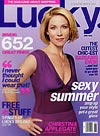 This entry was inspired by the following…
This entry was inspired by the following…
1. A British blogger’s comment today. This man, feeling like a miserable failure himself, was cheered up by the following practical joke: “If really fed up you could try putting in, miserable failure, (no quote marks) into Google and pressing the ‘I’m feeling lucky’ button.”
2. The page, excerpts from which are shown above, that you get if you put lucky (no quote marks) into Google and press the “I’m feeling lucky” button.
3. My own entries of May 31 on Language Games and of June 1 on language and history, Seize the Day and One Brief Shining Moment.
4. The related June 1 entry of Loren Webster, Carpe Diem, on the Marilyn Monroe rose. Images from Carpe and Shining are combined below:

John F. Kennedy
Aldous Huxley.
7. Yesterday’s entry about the alignment of stars, combined with the alignment of Venus with Apollo (i. e., the sun) scheduled for June 8.
All of the above suggest the following readings from unholy scripture:
A. The “long twilight struggle” speech of JFK
B. “The Platters were singing ‘Each day I pray for evening just to be with you,’ and then it started to happen. The pump turns on in ecstasy. I closed my eyes, I held her with my eyes closed and went into her that way, that way you do, shaking all over, hearing the heel of my shoe drumming against the driver’s-side door in a spastic tattoo, thinking that I could do this even if I was dying, even if I was dying, even if I was dying; thinking also that it was information. The pump turns on in ecstasy, the cards fall where they fall, the world never misses a beat, the queen hides, the queen is found, and it was all information.”
— Stephen King, Hearts in Atlantis, August 2000 Pocket Books paperback, page 437
C. “I will show you, he thought, the war for us to die in, lady. Sully your kind suffering child’s eyes with it. Live burials beside slow rivers. A pile of ears for a pile of arms. The crisps of North Vietnamese drivers chained to their burned trucks…. Why, he wondered, is she smiling at me?”
— Robert Stone, A Flag for Sunrise, Knopf hardcover, 1981, page 299
Saturday, January 24, 2004
Saturday January 24, 2004
Taking Lucifer Seriously:
Michael Sprinker
versus
The Society of Jesus
As the previous entry indicates, I do not take Christian poetry too seriously. The Prince of Darkness is another matter. I encountered him this morning in a book on the Christian poet Hopkins by the late Michael Sprinker.
“You were never on the debating team when you were in high school, were you, ace? When you’re in a debate, you don’t try to convince the other side; they’re never going to agree with you. You try to convince the judges and the audience.”
— Michael Sprinker, quoted in The Minnesota Review, 2003
“For Hopkins, poetry was the act of producing the self, one version of that selving which he associated not only with Christ but with Lucifer.”
— Michael Sprinker, “A Counterpoint of Dissonance” — The Aesthetics and Poetry of Gerard Manley Hopkins, Johns Hopkins University Press, 1980, p. 95
A counterbalance to Sprinker on Hopkins and Lucifer is Hopkins, the Self, and God, by Walter J. Ong, S. J. (University of Toronto Press, 1986). From p. 119:
“The interior dynamism of the Three Persons in One God was not for Hopkins some sort of formula for theological juggling acts but was rather the centre of his personal devotional life and thus of his own ‘selving.’ …. He writes to Bridges 24 October 1883…
‘For if the Trinity… is to be explained by grammar and by tropes… where wd. be the mystery? the true mystery, the incomprehensible
one.’ “
For the dynamics of the Trinity, see the Jan. 22 entry, Perichoresis, or Coinherence. Another word for coinherence is “indwelling,” as expressed in what might be called the
Song of Lucifer:
Me into you,
You into me,
Me into you…
For a Christian version of this “indwelling,” see
Coinherence,
Interpenetration,
Mutual Indwelling
See also last year’s entries of 9/09.
Sunday, January 4, 2004
Sunday January 4, 2004
Room 1010
Continuing the hotel theme of the previous entry….
John Gregory Dunne has a letter in the New York Review of Books of December 20 (St. Emil's Day in the previous entry), 1990. In this letter, he reveals that he and his wife had at one time worked on a Grand Hotel screenplay based in Las Vegas.
For related material in memory of Dunne, see In Lieu of Rosebud, which contains entries for 10/10-10/12, 2002.
Mein Irisch Kind,
Wo weilest du?
Thursday, November 6, 2003
Thursday November 6, 2003
Legacy Codes:
The Most Violent Poem
Lore of the Manhattan Project:
From The Trinity Site —
“I imagined Oppenheimer saying aloud,
‘Batter my heart, three person’d God,”
unexpectedly recalling John Donne’s ‘Holy Sonnet [14],’
and then he knew, ‘ “Trinity” will do.’
Memory has its reasons.
‘Batter my heart’ — I remember these words.
I first heard them on a fall day at Duke University in 1963.
Inside a classroom twelve of us were
seated around a long seminar table
listening to Reynolds Price recite this holy sonnet….
I remember Reynolds saying, slowly, carefully,
‘This is the most violent poem in the English language.’ ”
Related Entertainment

Today’s birthday:
director Mike Nichols
From a dead Righteous Brother:
“If you believe in forever
Then life is just a one-night stand.”
— Bobby Hatfield, found dead
in his hotel room at
7 PM EST Wednesday, Nov. 5, 2003,
before a concert scheduled at
Western Michigan University, Kalamazoo.
From a review of The Matrix Revolutions:
“You’d have to be totally blind at the end
to miss the Christian symbolism….
Trinity gets a glimpse of heaven…. And in the end…
God Put A Rainbow In The Clouds.”
Moral of the
Entertainment:
According to Chu Hsi [Zhu Xi],

“Li” is
“the principle or coherence
or order or pattern
underlying the cosmos.”
— Smith, Bol, Adler, and Wyatt,
Sung Dynasty Uses of the I Ching,
Princeton University Press, 1990
Related Non-Entertainment
Symmetry and a Trinity
(for the dotting-the-eye symbol above)
Introduction to Harmonic Analysis
(for musical and historical background)
Mathematical Proofs
(for the spirit of Western Michigan
University, Kalamazoo)
Moral of the
Non-Entertainment:
“Many kinds of entity
become easier to handle
by decomposing them into
components belonging to spaces
invariant under specified symmetries.”
— The importance of
mathematical conceptualisation
by David Corfield,
Department of History and
Philosophy of Science,
University of Cambridge
See, too,
Symmetry of Walsh Functions and
Geometry of the I Ching.
Saturday, November 1, 2003
Saturday November 1, 2003
All Saints' Day:
The Song of Saint Ezra
Ezra Pound, imagist poet and fascist saint, died on this date in 1972.
"But you, newest song of the lot,
You are not old enough
to have done much mischief.
I will get you a green coat out of China
With dragons worked upon it."
— "Further Instructions," 1913
For more on China and Christian Fascism, see the memorial to the wife of Generalissimo Chiang Kai-shek in TIME magazine, issue dated Nov. 3, 2003.
From Image in Poetry:
"Ezra Pound made perhaps the most widely used definition of image in the 20th century:
An ‘Image’ is that which presents an intellectual and emotional complex in an instant of time. "
— Ezra Pound, "A Few Don’ts by an Imagiste," Poetry, March 1913
For an excellent essay by Jungian James Hillman on the political implications of imagism, see
Egalitarian Typologies versus
the Perception of the Unique.
A specific image that is a personal favorite of mine is found in the I Ching:

Note that in the West,
this Chinese character
is known as the "Pound sign."
"The Perception of the Unique," indeed.
Thursday, September 11, 2003
Thursday September 11, 2003
Particularity
|
|
|
Upon learning of the recent death of Walter J. Ong, S. J., philosopher of language, I ordered a copy of his book
Hopkins, the Self, and God
University of Toronto Press, 1986.
As the reader of my previous entry will discover, I have a very low opinion of the literary skills of the first Christians. This sect’s writing has, however, improved in the past two millennia.
Despite my low opinion of the early Christians, I am still not convinced their religion is totally unfounded. Hence my ordering of the Ong book. Since then, I have also ordered two other books, reflecting my interests in philosophical fiction (see previous entry) and in philosophy itself:
Philosophical fiction —
The Hex Witch of Seldom,
by Nancy Springer,
Penguin Putnam Inc., 2002
(See 1 Corinthians 1:26-29)
Philosophy —
Definition,
by Richard Robinson,
Fellow of Oriel College, Oxford,
Oxford U. Press, 1954, reprinted 1962.
Following the scientific advice of Niels Bohr and Freeman Dyson, I articulated on April 25, 2003, a mad theory of the mystical significance of the number 162.
Here is that theory applied to the three works named above, all three of which I received, synchronistically, today.
Page 162 of Hopkins, the Self, and God is part of the long list of references at the back of the book. Undiscouraged by the seeming insignificance (vide my note Dogma) of this page, I looked more closely. Behold, there was Christ… Carol T. Christ, that is, author of The Finer Optic: The Aesthetic of Particularity in Victorian Poetry, Yale University Press, 1975. “Particularity” seemed an apt description of my “162” approach to literature, so I consulted Christ’s remarks as described in the main body of Ong’s book.
Particularity according to Christ —
“Victorian particularist aesthetics has prospered to the present time, and not only in novels. The isolated, particularized, unique ‘good moment’ [Christ, 105], the flash of awareness at one particular instant in just the right setting, which Hopkins celebrates….”
— Ong, Hopkins, the Self, and God, p. 14
I highly recommend the rest of Ong’s remarks on particularity.
Turning to the other two of the literary trinity of books I received today….
Page 162 of The Hex Witch of Seldom has the following:
“There was a loaf of Stroehmann’s Sunbeam Bread in the grocery sack also; she and Witchie each had several slices. Bobbi folded and compressed hers into little squares and popped each slice into her mouth all at once.”
The religious significance of this passage seems, in Ong’s Jesuit context, quite clear.
Page 162 of Definition has the following:
“Real Definition as the Search for a Key. Mr. Santayana, in his book on The Sense of Beauty, made the following extremely large demands on real definition:
‘A definition <of beauty> that should really define must be nothing less than the exposition of the origin, place, and elements of beauty as an object of human experience. We must learn from it, as far as possible, why, when, and how beauty appears, what conditions an object must fulfil to be beautiful, what elements of our nature make us sensible of beauty, and what the relation is between the constitution of the object and the excitement of our sensibility. Nothing less will really define beauty or make us understand what aesthetic appreciation is. The definition of beauty in this sense will be the task of this whole book, a task that can be only very imperfectly accomplished within its limits.’ ”
Here is a rhetorical exercise for Jesuits that James Joyce might appreciate:
Discuss Bobbi’s “little squares” of bread as the Body of Christ. Formulate, using Santayana’s criteria, a definition of beauty that includes this sacrament.
Refer, if necessary, to
the log24.net entries
Mr. Holland’s Week and Elegance.
Refrain from using the phrase
“scandal of particularity”
unless you can use it as well as
Annie Dillard.
Monday, August 4, 2003
Monday August 4, 2003
Resurrection
The previous entry, on Christian theology, does not imply that all religion is bad. Consider, for instance, the following from a memorial web page:
“Al Grierson’s song Resurrection was sung by Ray Wylie Hubbard, on his outstanding Dangerous Spirits album. The song is awesome, and fits right into Ray Wylie’s spirit ‘and an angel lay on a mattress and spoke of history and death with perfume on her lingerie and whiskey on her breath . . . he’s loading up his saddlebags on the edge of wonder, one is filled with music and the other’s filled with thunder.’ Wow.”
Amen.
Grierson died on November 2, 2000
— All Souls Day, Dia de los Muertos.
My own favorite resurrection story is “Damnation Morning,” by Fritz Leiber; see Why Me?
For more on the Day of the Dead, see Under the Volcano.
These are, of course, just stories, but may reflect some as yet unknown truth.
By the way, thanks, Joni, for leading me to KHYI.com on the day of the Toronto Stones concert.
Wednesday, July 30, 2003
Wednesday July 30, 2003
Toronto Day
Today is said to be the day Toronto was founded, and is the day, they say, of what will be the largest concert in the history of Canada….
The Rolling Stones at
Downsview Park, Toronto.
Comparisons to Woodstock have been made, with attendance expected to be about half a million strong. Thoughts of Woodstock reminded me of Joni Mitchell, and so I sought Joni’s advice for an alternative to the spirit of this event, recalling her words
Oh honey you turn me on
I’m a radio
I’m a country station
I’m a little bit corny
………………………………
I’m a broadcasting tower
Waving for you
And I’m sending you out
This signal here
I hope you can pick it up
Loud and clear
A search for the promised
country station yielded….
The redneck alternative….
 |
TWANG ‘EM! |
Today’s culture wars quote:
Tuesday, April 15, 2003
Tuesday April 15, 2003
Green and Burning
After posting the 2:42 PM entry at a public library this afternoon, I picked up the following at a “Friends of the Library” used-book sale:
The Green and Burning Tree:
On the Writing and Enjoyment
of Children’s Books,
by Eleanor Cameron (Little, Brown and Company, Boston and Toronto, 1969).
Cameron, on page 73, gives the source of her title; it is from the Mabinogion:
“And they saw a tall tree by the side of the river, one half of which was in flames from the root to the top, and the other half was green and in full leaf.”
Cameron finds the meaning of this symbol in Dylan Thomas: His Life and Work, by John Ackerman (Oxford University Press, 1964), p. 6:
“Another important feature of the old Welsh poetry is an awareness of the dual nature of reality, of unity in disunity, of the simultaneity of life and death, of time as an eternal moment rather than as something with a past and future.”
For part of a Nobel Prize lecture on this topic — time as an eternal moment — see Architecture of Eternity, a journal note from December 8, 2002.
That lecture is from an author, Octavio Paz, who wrote in Spanish. Here are some other words in that language:
Mi verso es de un verde claro,
Y de un carmín encendido.My verse is a clear green,
And a burning crimson.
These lyrics to the song “Guantanamera” (see Palm Sunday) were on my mind this afternoon when Cameron’s book caught my eye.
Green and crimson are, of course, also the colors of Christmas, or “Christ Mass.” In view of the fact that Cameron’s book is about children’s literature, this leads, like it or not, to the following meditation.
From a religious site:
Matthew 18:3 – And said, Truly I say to you, Unless you are converted, and become like little children, you shall not enter into the kingdom of heaven.
Mark 10:15 – Truly I say to you, Whoever shall not receive the kingdom of God as a little child shall not enter it at all.
Luke 18:17 – Truly I say to you, Whoever does not receive the kingdom of God as a little child shall by no means enter it.
A meditation from a less religious site:
“What I tell you three times is true.”
Finally, from what I now consider
- in view of the song lyrics quoted above,
- in view of the fact that it deals with a Cuban movie also titled “Guantanamera,”
- in view of Cameron’s remarks on Bergman’s “The Seventh Seal” (p. 129), and
- in view of my April 7 entry on mathematics and art,
to be an extremely religious site, a picture:

Saturday, April 5, 2003
Saturday April 5, 2003
Art Wars:
Mathematics and the
Emperor's New Art
From Maureen Dowd's New York Times column of June 9, 2002:
"The shape of the government is not as important as the policy of the government. If he makes the policy aggressive and pre-emptive, the president can conduct the war on terror from the National Gallery of Art."
|
NY Times, April 5, 2003: |
|
Meanwhile, at the Washington Post, another example of great determination and strength of character:
Donald Coxeter Dies: Leader in Geometry
By Martin Weil
Washington Post Staff Writer
Saturday, April 5, 2003
"Donald Coxeter, 96, a mathematician who was one of the 20th century's foremost specialists in geometry and a man of great determination and strength of character as well, died March 31 at his home in Toronto."
From another Coxeter obituary:
In the Second World War, Coxeter was asked by the American government to work in Washington as a code-breaker. He accepted, but then backed out, partly because of his pacifist views and partly for aesthetic reasons: "The work didn't really appeal to me," he explained; "it was a different sort of mathematics."
For a differing account of how geometry is related to code-breaking, see the "Singer 7-cycle" link in yesterday's entry, "The Eight," of 3:33 PM. This leads to a site titled
An Introduction to the
Applications of Geometry in Cryptography.
"Now I have precisely the right instrument, at precisely the right moment of history, in exactly the right place."
— "Patton,"
the film

Added Sunday, April 6, 2003, 3:17 PM:
The New York Times Magazine of April 6
continues this Art Wars theme.

(Cover typography revised)
The military nature of our Art Wars theme appears in the Times's choice of words for its cover headline: "The Greatest Generation." (This headline appears in the paper, but not the Internet, version.)
Some remarks in today's Times Magazine article seem especially relevant to my journal entry for Michelangelo's birthday, March 6.
"…Conceptualism — suddenly art could be nothing more than an idea….
LeWitt moved between his syntax of geometric sculptures and mental propositions for images: concepts he wrote on paper that could be realized by him or someone else or not at all. Physical things are perishable. Ideas need not be."
— Michael Kimmelman, chief art critic of the New York Times, April 6, 2003
Compare this with a mathematician's aesthetics:
"A mathematician, like a painter or a poet, is a maker of patterns. If his patterns are more permanent than theirs, it is because they are made with ideas."
— G. H. Hardy, A Mathematician's Apology (1940), reprinted 1969, Cambridge U. Press, p. 84
It seems clear from these two quotations that the real conceptual art is mathematics and that Kimmelman is peddling the emperor's new clothes.
Monday, March 24, 2003
Monday March 24, 2003
Orwell’s question, according to
an admirer of leftist Noam Chomsky:
“When so much of the BS is right out in the open,
why is it that we know so little about it?
Why don’t we see what’s right in front of our eyes?”
 Oscar |
Lying, Truth-Telling, and the Social Order |
 Michael Moore |
“First of all, I’d like to thank the Academy….”
— Quotation attributed to Plato
The New Yorker of March 31, 2003, discusses leftist academic Noam Chomsky. The online edition provides a web page listing pro-Chomsky links.
Chomsky’s influence is based in part on the popularity of his half-baked theories on linguistics, starting in the 1950’s with “deep structure” and “transformational,” or “generative,” grammar.
Chomsky has abandoned many of his previous ideas and currently touts what he calls The Minimalist Program.
For some background on Chomsky’s recent linguistic notions, see the expository essay “Syntactic Theory,” by Elly van Gelderen of the Arizona State University English Department. Van Gelderen lists her leftist political agenda on her “Other Interests” page. Her department may serve as an example of how leftists have converted many English departments in American universities to propaganda factories.
Some attacks on Chomsky’s scholarship:
Forty-four Reasons Why the Chomskians Are Mistaken
Chomsky’s (Mis)Understanding of Human Thinking
Anatomy of a Revolution… Chomsky in 1962
…Linguistic Theory: The Rationality of Noam Chomsky
Some attacks on Chomsky’s propaganda:
Destructive Generation excerpt
Partners in Hate: Noam Chomsky and the Holocaust Deniers
Chomsky and Plato’s Diamond

Like another purveyor of leftist nonsense, Jacques Derrida, Chomsky is fond of citing Plato as a precedent. In particular, what Chomsky calls “Plato’s problem” is discussed in Plato’s Meno. For a look at the diamond figure that plays a central role in that dialogue, see Diamond Theory. For an excellent overview of related material in Plato, see Theory of Forms.
Monday, January 20, 2003
Monday January 20, 2003
Shine On, Robinson Jeffers
"…be in nothing so moderate as in love of man,
a clever servant, insufferable master.
There is the trap that catches noblest spirits,
that caught — they say — God, when he walked on earth."
— Shine, Perishing Republic, by Robinson Jeffers
Robinson Jeffers died at Big Sur, California, on January 20, 1962 — a year to the day after Robert Frost spoke at the Kennedy inauguration.
"The poetry of Robinson Jeffers shines with a diamond's brilliance when he depicts Nature's beauty and magnificence. His verse also flashes with a diamond's hardness when he portrays human pain and folly."
— Gary Suttle
"Praise Him, He hath conferred aesthetic distance
Upon our appetites, and on the bloody
Mess of our birthright, our unseemly need,
Imposed significant form. Through Him the brutes
Enter the pure Euclidean kingdom of number…."
— Howard Nemerov,
Grace To Be Said at the Supermarket
"Across my foundering deck shone
A beacon, an eternal beam. | Flesh fade, and mortal trash
Fáll to the resíduary worm; | world's wildfire, leave but ash:
In a flash, at a trumpet crash,
I am all at once what Christ is |, since he was what I am, and
Thís Jack, jóke, poor pótsherd, | patch, matchwood,
immortal diamond,
Is immortal diamond."
— Gerard Manley Hopkins,
That Nature is a Heraclitean Fire and of the Comfort of the Resurrection
"In the last two weeks, I've been returning to Hopkins. Even in the 'world's wildfire,' he asserts that 'this Jack, joke, poor potsherd, patch, matchwood, immortal diamond,/Is immortal diamond.' A comfort."
— Michael Gerson, head White House speechwriter,
in Vanity Fair, May 2002, page 162
"There's none but truth can stead you. Christ is truth."
— Gerard Manley Hopkins
"The rock cannot be broken. It is the truth."
— Wallace Stevens
"My ghost you needn't look for; it is probably
Here, but a dark one, deep in the granite…."
— Robinson Jeffers, Tor House
On this date in 1993, the inauguration day of William Jefferson Clinton, Audrey Hepburn died.
"…today, the Rock cries out to us, clearly, forcefully…."
— Maya Angelou, January 20, 1993
"So, purposing each moment to retire,
She linger'd still. Meantime, across the moors,
Had come young Porphyro, with heart on fire"
— John Keats, The Eve of St. Agnes (January 20), IX
|
Top view of |
Top view of |
What you see with a Hearts On Fire diamond is an unequalled marriage of math and physics, resulting in the world's most perfectly cut diamond. |
"Eightpointed symmetrical signs are ancient symbols for the Venus goddess or the planet Venus as either the Morning star or the Evening star."
— Symbols.com
"Set me as a seal upon your heart, as a seal upon your arm; for love is strong as death, passion fierce as the grave. Its flashes are flashes of fire, a raging flame."
— Song of Solomon
"The last words from the people in the towers and on the planes, over and over again, were 'I love you.' Over and over again, the message was the same, 'I love you.' …. Perhaps this is the loudest chorus from The Rock: we are learning just how powerful love really is, even in the face of death."
— The Rev. Kenneth E. Kovacs
"Then I'll get on my knees and pray
We don't get fooled again."
— The Who
See also my note, "Bright Star," of October 23, 2002.
Saturday, January 4, 2003
Saturday January 4, 2003
ART WARS:
The Reader
Over Your Shoulder
|
|
The Reader Over Your Shoulder: A Handbook for Writers of English Prose |
See also last night’s entry on “Red Dragon” and
this news story on a Chinese cannibal-artist
from today’s Toronto Globe and Mail.
Friday, January 3, 2003
Friday January 3, 2003
The Shanghai Gesture:
An Exercise in Synchronicity
“A corpse will be transported by express!”
— Under the Volcano, by Malcolm Lowry (1947)
|
|
|
For Dietrich, see the reference below;
For Minogue, see my entry
“That Old Devil Moon”
of January 1st, 2003.
|
From the Turner Classic Movies website: PLAYING ON TCM: Shanghai Express (1932) A beautiful temptress re-kindles an old romance while trying to escape her past during a tension-packed train journey. [Set in 1931] BW-82m |
From The New Yorker magazine,
received in the mail this afternoon:
|
Shanghai Moon “…a new play… set in Shanghai in 1931…. Previews begin Jan. 3.” |
Given the above, a believer in synchronicity
under the volcano
will naturally search for a suitable corpse…
and voilà:
|
Friday, Jan. 3, 2003. 05:50 PM Syndicated astrologist LOS ANGELES (AP) — Sydney Omarr, the astrologer to the stars who came to write horoscopes that appear in more than 200 North American newspapers, has died. He was 76. Omarr, who was blinded and paralysed from the neck down by multiple sclerosis, died Thursday [Jan. 2, 2003] in hospital in Santa Monica of complications from a heart attack, the Los Angeles Times reported. His ex-wife, assistants and several close friends were by his side. Born Sidney Kimmelman in Philadelphia, Omarr decided to change his name at age 15 after watching a movie called The Shanghai Gesture, starring Victor Mature as a character named Omar. He changed the spelling of his first name and adopted Omar as his last name, but added a second “r,” in accordance with certain numerological formulas. |
“It has a ghastly familiarity,
like a half-forgotten dream.”
— Poppy (Gene Tierney) in
“The Shanghai Gesture.”
“It’s a gesture, dear, not a recipe.”
— Peggy (Vanessa Redgrave) in
“Prick Up Your Ears“
Wednesday, December 18, 2002
Wednesday December 18, 2002
For the Dark Lady
On this midnight in the garden of good and evil, our new site music is “Nica’s Dream.”
From a website on composer Horace Silver:
“Horace Silver apparently composed Nica’s Dream (1956) for Baroness Pannonica de Koenigswarter-Rothschild, an English aristocrat and a very dear friend of his. She was known to the New York press as the Jazz Baroness and to the black musicians for whom she was something of a patron, simply as Nica. Her apartment in the fashionable Hotel Stanhope on Fifth Avenue became a ‘hospitality suite for some of the greatest jazz players of the day, whom she treated generously.’ (Jack Chambers, Milestones: The Music and Times of Miles Davis, University of Toronto Press, 1985, 1:248)
This music is not unrelated to the work of Thomas Pynchon. From an essay by Charles Hollander:
“There are some notable parallels between Nica and the woman Stencil knows as V., who started her career with ‘…a young crude Mata Hari act.’ (V.; 386)…. Not that V. is Nica in any roman a clef sense: she is not. But the resonances are powerful at the level of the subtext. Nica is a Rothschild whose life reflects the issues Pynchon wants us to attend in V.: disinheritance, old dynasty vs. new dynasty, secret agents and couriers, plots and counter-plots, ‘The Big One, the century’s master cabal,’ and ‘the ultimate Plot Which Has No Name’ (V.; 226)….”
See also my journal entry for the December 16-17 midnight, “Just Seventeen.”
Friday, December 13, 2002
Friday December 13, 2002
Dead Poets Society
Man’s spirit will be flesh-bound, when found at best,
But úncúmberèd: meadow-dówn is nót distréssed
For a ráinbow fóoting it nor hé for his bónes rísen.
Gerard Manley Hopkins,
Society of Jesus
In accordance with this sentiment,
this midnight in the garden of good and evil
is the occasion for a change of site music
to “Skylark,” by Hoagy Carmichael
(lyrics by Johnny Mercer).
Friday, December 6, 2002
Friday December 6, 2002
Great Simplicity
|
|
|
|
|
is the day that Daisetsu Suzuki attained satori,
according to the Zen Calendar. “Daisetsu” is
said to mean “Great Simplicity.”
For those who prefer Harry Potter and
Diagon Alley, here is another calendar:

To Have and Have Not
Those who prefer traditional Western religions may like a site on the Trinity that contains this:
“Zen metaphysics is perhaps most succinctly set forth in the words ‘not-two.” But even when he uses this expression, Suzuki is quick to assert that it implies no monism. Not-two, it is claimed, is not the same as one.* But when Suzuki discusses the relationship of Zen with Western mysticism, it is more difficult to escape the obvious monistic implications of his thinking. Consider the following:
We are possessed of the habit of looking at Reality by dividing it into two… It is all due to the human habit of splitting one solid Reality into two, and the result is that my ‘have’ is no ‘have’ and my ‘have not’ is no ‘have not.’ While we are actually passing, we insist that the gap is impassable.**”
*See: Daisetz T. Suzuki, ‘Basic Thoughts Underlying Eastern Ethical and Social Practice’ in Philosophy and Culture — East and West: East-West Philosophy in Practical Perspective, ed. Charles A. Moore (Honolulu: University of Hawaii Press, 1968), p. 429
** Daisetsu Teitaro Suzuki, Mysticism Christian and Buddhist (London: George Allen & Unwin, 1957, Unwin paperback, 1979), p. 57.
Personally, I am reminded by Suzuki’s satori on this date that today is the eve of the anniversary of Pearl Harbor. I am also reminded by the rather intolerant tract on the Trinity quoted above that the first atomic bomb was exploded in the New Mexico desert at a test site named Trinity. Of course, sometimes intolerance is justified.
Concluding unscientific postscript:
On the same day in 1896 that D. T. Suzuki attained satori,
lyricist Ira Gershwin was born.
Dies irae, dies illa.
Saturday, October 26, 2002
Saturday October 26, 2002
| Morte d’Arthur |
|
From On All Hallows’ Eve, by Grace Chetwin:
“Please continue your account of Morgan le Fay.”
“People think of her as bad. They say that she tried to murder her brother, King Arthur of the Round Table…. But she did good things too. She gave Arthur his sword, Excalibur, and, well, when he lay dying, she and two other queens took him onto their barge and bore him from the world to heal his wounds and make him whole again. It was ‘… a dusky barge, Dark as a funeral scarf from stem to stern,’ and the three queens wore ‘crowns of gold’….”
Greylen smiled. “Very good. You like this Morgan le Fay very much, it is clear.”….
“I know more than that,” Meg went on quickly. “She is also called Nimue and Vivian, but those names are wrong, too. Her true name goes right back to the Mabinogion — that’s a really old collection of Welsh bardic tales. Her real name is Rhiannon….”
In honor of Grace Chetwin, this site’s music is now a theme more suitable for All Hallows’ Eve.


